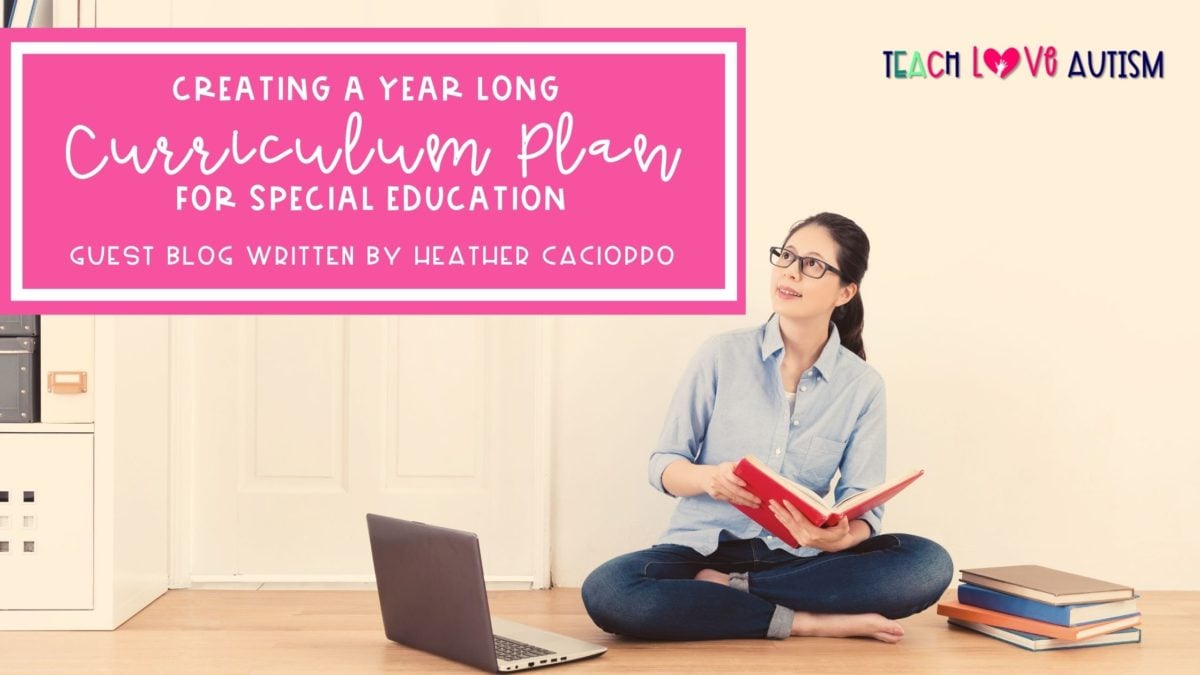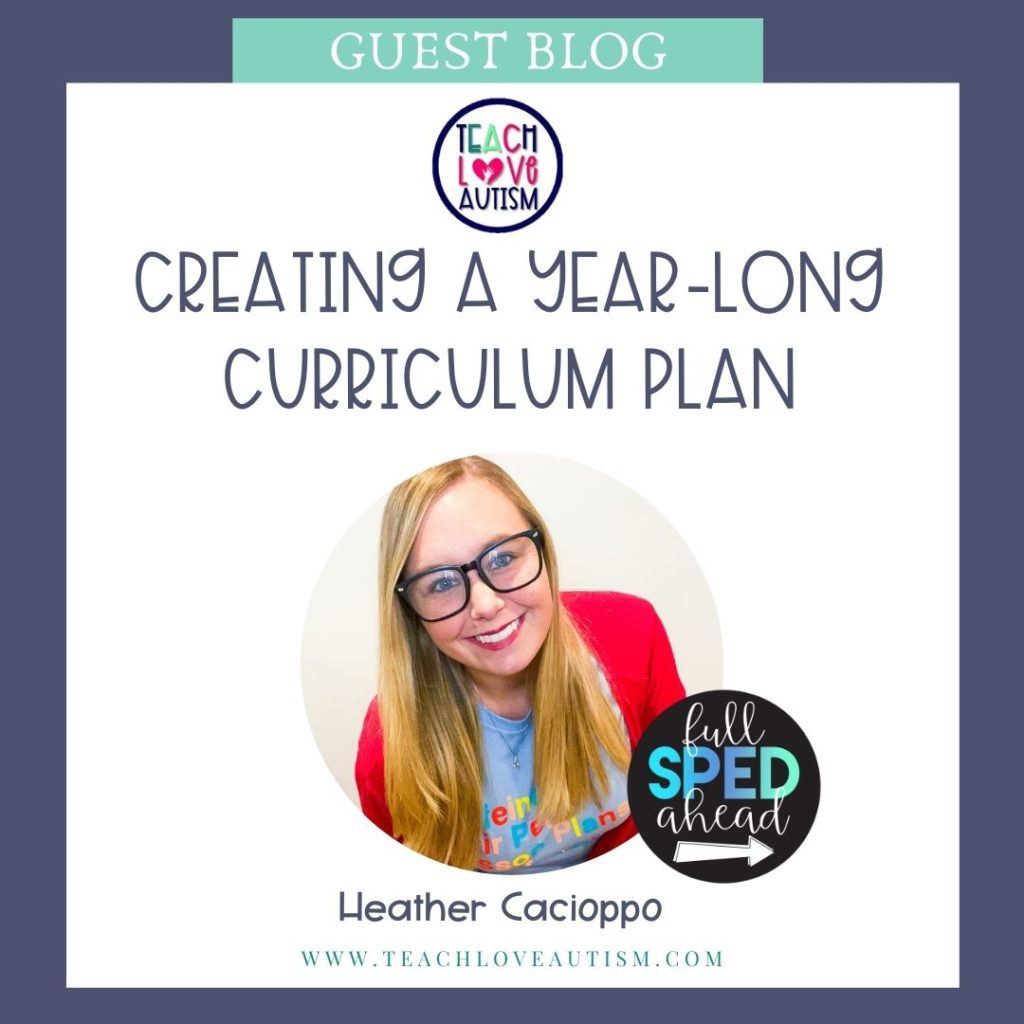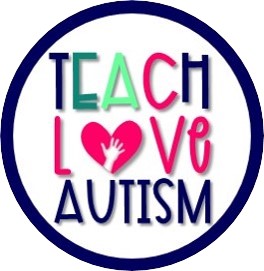Creating A Curriculum Plan for Special Education
Sharing is caring!

Featured guest blogger: Heather, a middle school functional life skills self-contained teacher and blogger at Full Sped Ahead.
All teachers need a curriculum plan for special education or any classroom for that matter. If you’re like me, your district has given you a curriculum to follow (maybe) but hasn’t told you what skills to teach or in what order. This doesn’t help you when you have to figure out lesson plans all year long.
Let us all be honest and say that our undergraduate degree never truly taught us how to create a year-long plan. Especially for students in three to nine different grade levels or for multiple subject areas.
Finally, let us all clear the air and say that one curriculum does not serve all learners in our classroom. So you’re here because you have multiple grade-level content to teach, and multiple subject areas to tackle in one day.
Creating a year-long curriculum plan for special education sounds like such a daunting task, right? Here are a few things to consider before you begin mapping out your entire school year.
Understanding Student Academic Levels
Take a look at your students’ IEPs, any data collection you have, parent interviews, previous teacher interviews, and state assessments to determine where your students are academically. This will help give you a base for creating a year-long plan.
Know Your State or District Standards

Once you have your student’s current academic levels, you should look at your state standards for your grade level. If you have modified standards such as DLM Essential Elements, the bridge to understanding these standards is much simpler.
Check with your special education director to see if you should be following the grade-level standards or academic level standards. This comes to play when you’re writing goals and targeting content in your classroom.
For example, a student is in 8th grade (grade level) but is working on kindergarten skills (academic level)
Print out or have a copy available to jot down a common theme or skill. For example, if the main idea and key ideas keep being stated in the standards, make sure you have a unit or make time for that in your plan. Typically you can find 10-20 skills to hone in on when writing your curriculum map.
Using Materials with the Curriculum Plan for Special Education
Once you have written down at least 10 skills to work on, you must consider the curriculum available to you. Check with a curriculum specialist or instructional coach to see what options are available if you do not know.
By having your student ability levels and the state standards are written down, you should have a clear idea of what your students can do and where they need to go.
Take a look at each curriculum, or in reality the only curriculum that is currently available. Look to see which skills are listed in the plan. There should be a teacher guide to show you units or lesson plans if you have a boxed curriculum. Read more about some curriculum materials here. Makes sense, we need a curriculum plan for special education that lasts all year long!
What do I do if I don’t have a curriculum available?

- Other teachers in the district with similar classes to yours to see what they use
- Coordinator or mentor to see options
- Check a budget to see if you have any spending money for your classroom
- Use supplemental materials (TPT) or websites
Ultimately, you need to have a curriculum to follow – keep making noise until you get one or two. IXL is a great digital resource for all subject areas that meet a wide range of skills and abilities.
Supplemental materials
I have used many boxed curricula in my years of teaching and let’s just say they aren’t as comprehensive as they should be. We need supplemental materials when creating our year-long plan!
It is true that teachers will need to get supplemental materials in order to get all the skills they need for their students. I had been using a math curriculum that focused heavily on numbers and counting but did not cover any geometry skills such as shapes or patterning.
I chose to purchase a few items off of TeachersPayTeachers in order to make a unit that met my students’ needs. If that’s not for you, then you might want to sign up here for more information, tips, tricks, and freebies to help you get started!
[convertkit form=722051]
If you are using your own money, make sure the product is something you will actually use. You can also ask the store a question about the resource. 9 times out of 10, I’m sure a seller would let you see a preview or a page of the product before purchasing it to determine if it is right for your students.
You can also make things out of the materials you have- cut shapes out of paper and have your students glue them into a picture while identifying them. The dollar store will be your best friend for the first couple of years of teachers while you build up your library of activities and resources.
Garage sales, Goodwill, and Facebook Marketplace are great places to look if you need educational toys, games, and activities.
IEP Goals that Work with the Curriculum Plan for Special Education

Finally, you need to consider your student’s IEP goals. You may have a student working on multiplication, but you don’t plan to do a unit on multiplication until February. Consider what you can do weekly to make sure you’re tracking that goal. If possible, try to do some mini-lessons to continuously target IEP goals.
How long will this take to create?
Before you start putting units together and figuring out which month to teach which skills, you need to consider how much time you want to take on each skill.
For example, for math, I like to teach measurement and fractions in November so students can help with cooking and baking. I also do budgeting in December so students can practice using money and buying items for the holidays. We do coin and dollar identification and simple money exchanges in the months leading up to it.
Take a look at the school calendar- planned breaks, vacations, teacher workdays, or professional development days.
Write those down on a calendar or on a note so you remember. I typically spend 2-3 weeks on a topic. I rotate through skills twice a year.
Can we all agree that this is a difficult and time-consuming task to do? This is most likely why it never gets done. When you finally sit down and work on a curriculum plan for special education you realize all the hard work you do. What other teacher teaches 5-8 subject areas in a day?
Heather Cacioppo is a middle school self-contained life skills special education teacher with a Master’s degree in Teacher Leadership. Heather has been a special education teacher in Illinois for 8 years. She has found her passion for working with students on functional and daily living skills, including work experiences for her middle schoolers. You can find her at her website: FULL SPED AHEAD





